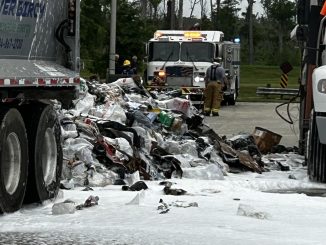
Gov. Blanco and Louisiana Homeland Security need to firm up the details of the state evacuation plan.Parish and city officials have learned part of the state plan is to bring several thousand New Orleans residents to Hammond by train and then transfer them onto buses bound for as yet unknown shelter locations.
We hope there’s more to the plan than that.
Americans are not cattle to be hauled about here and there. They have the right to at least know where they are going, when and how they will get there so they can make their individual plans and take responsibility for themselves as much as possible.
What’s the plan for handling people who get off the train in Hammond but do not prefer to continue on to other locations?
With a tropical storm that’s soon to become a hurricane heading toward Louisiana’s general vicinity this week, now would be a good time to release the details of a solid plan, or put one together if it doesn’t exist. Little details can become big issues fast, especially when they involve thousands of people. It would be prudent to include local officials in the discussion.
We’re losing chance to reshape state.
A full year after Hurricane Katrina’s landfall in Louisiana and Mississippi, it is difficult to find anything that we can point to with confidence and say that the right lesson has been learned and the problem has been fixed.
Continued frustration and foul-ups (i.e., the trailer door lock debacle, continued denial by the head of Homeland Security that he dawdled while people died) give us no confidence that FEMA has set its house in order.
There are people who still are awaiting a FEMA trailer, and there still are thousands of unused ones sitting in Arkansas.
The Army Corps of Engineers said the levees that busted in New Orleans are no safer today than they were before Katrina hit.
New Orleans itself not only is not fixed, its still struggling to come up with a realistic plan of what to fix and how to do it. The only plan it has is to evacuate – but apparently to places that have no plans and no resources to take care of the evacuees.
Consumers have no confidence that the insurance they’ve paid for through the years will pay for their losses should another storm happen. That’s, of course, the ones who have not had their insurance canceled because the companies want to insure only their profits.
Government leaders still work at cross-purposes and are nowhere nearly on the same page. Witness Gov. Blanco’s apology for Mayor Nagin’s insensitive description of the 9/11 Ground Zero site as “a hole in the ground.”
Communities such as Baton Rouge and Lafayette and Opelousas that took in evacuees who have remained in our midst still are struggling to find means to deal with the increased traffic, greater housing needs and, yes, increased crime that have been the result.
And all of the Katrina turmoil continues to distract practically everyone and rob needed resources as southwest Louisiana tries to rebuild from Rita.
We are running out of time to get things done right.
As a study by the Nelson Rockefeller Foundation describes it, “Katrina and Rita produced two disasters. The first was the immediate crisis created when the hurricanes made landfall. The second was the difficulty various levels of government had in working together to respond to the crisis.
This was – and remains – the more dangerous of the two because the inability to work well together has spilled over into the recovery efforts, with ordinary citizens caught in the middle. The long-term impact could be the haphazard rebuilding of the devastated communities, meaning mistakes will be repeated, segments of the population will be left out and a rare opportunity to reshape a region for the better will be lost.”




Be the first to comment